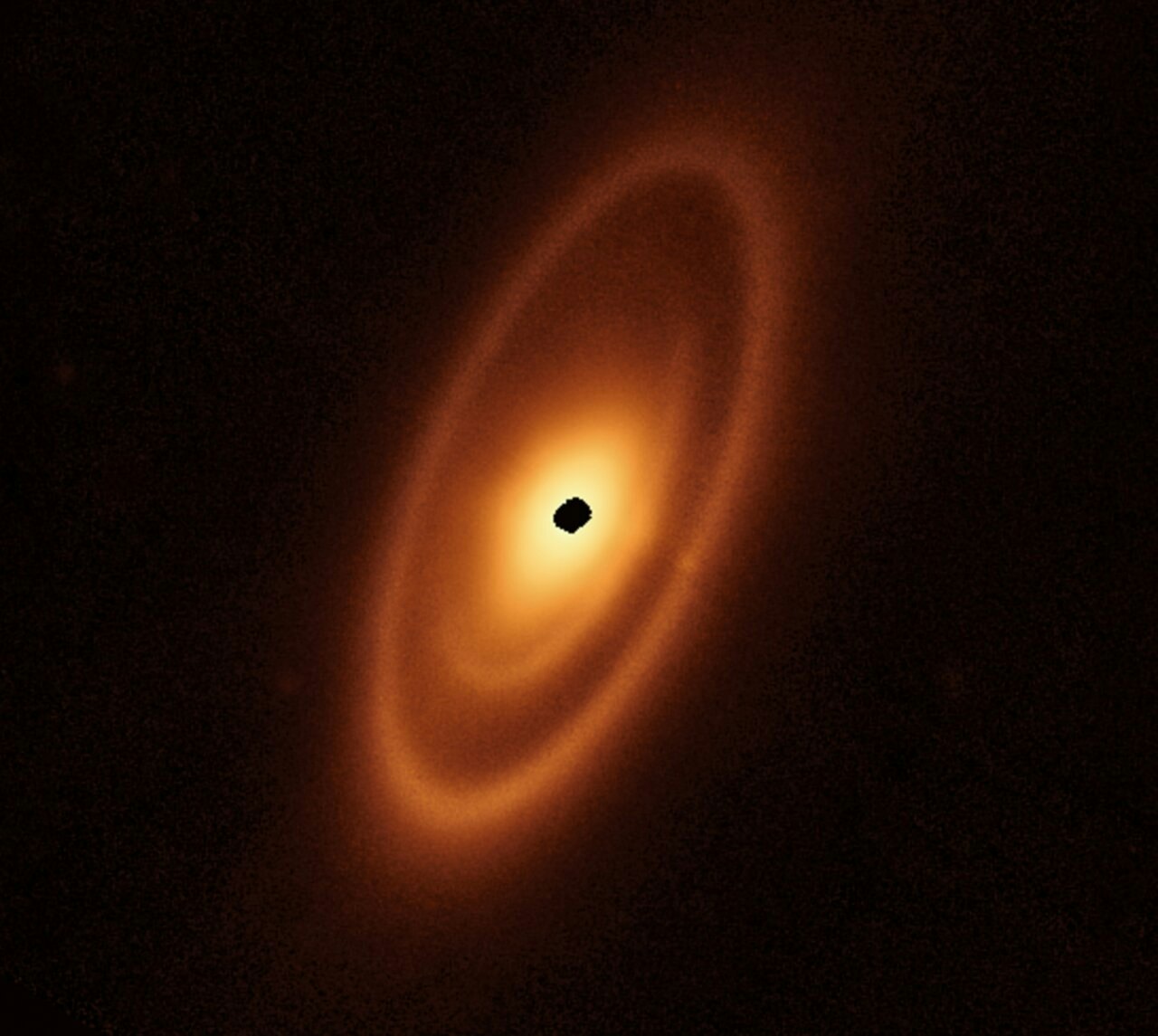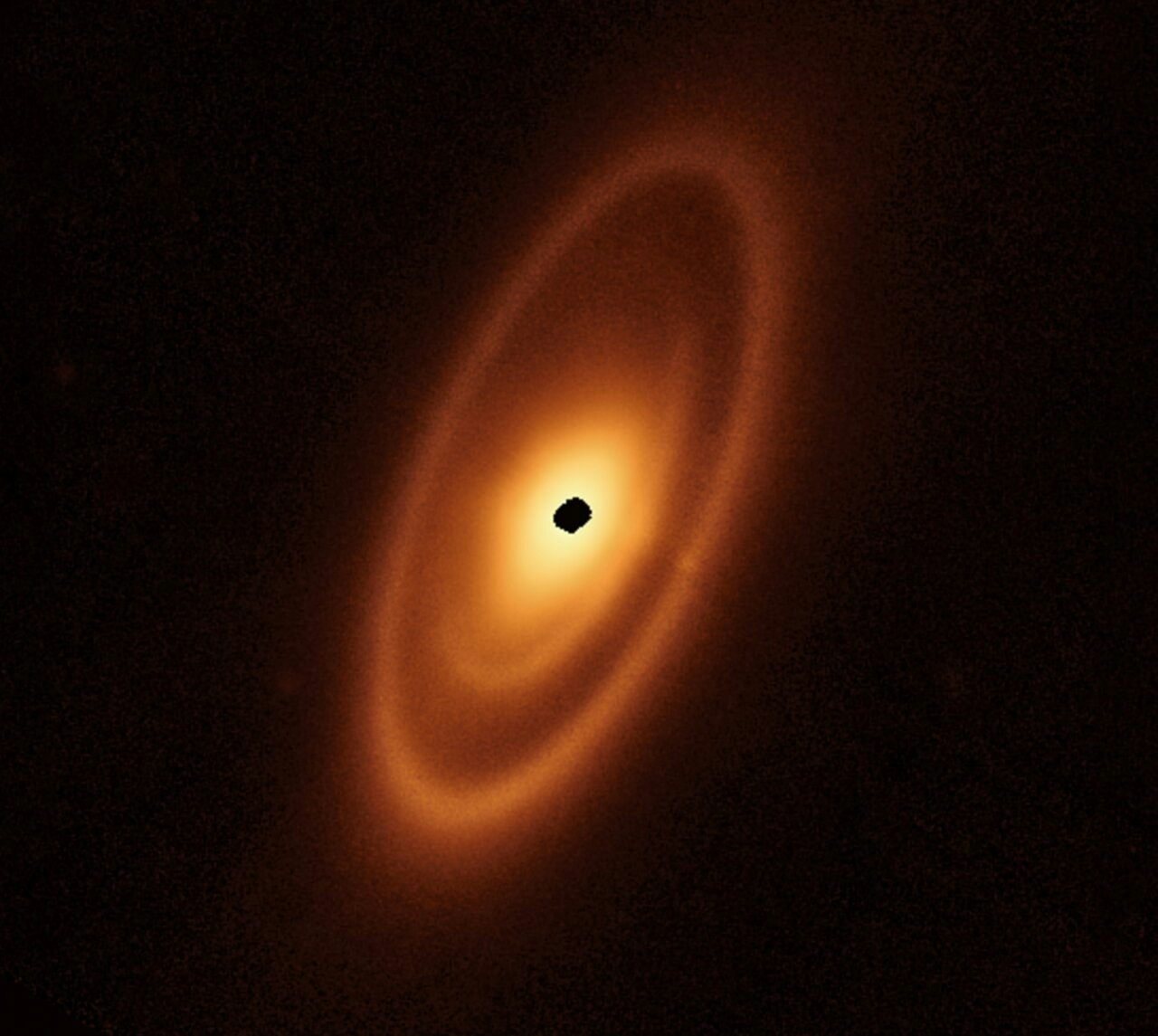
From dust we came, or so the saying goes. As scientists continue to render faraway primordial puffs with tools like the James Webb Space Telescope (JWST), they’re revealing a lot of new science about how planets are born.
In a study published Monday in the journal Nature Astronomy, astronomers showcase not one, not two, but three rings of debris around a hot and nearby star called Fomalhaut, located just 25 light-years away from Earth in the direction of the southern constellation Piscis Austrinus.
This is the first time that astronomers were able to see the two inner dust rings of its disk, outlined by clear gaps in between. This is also the latest effort at explaining a mystery found in the system’s third, previously-known ring, where a halo may be proof of a violent altercation playing out between two young, would-be icy planets.
The Solar System was once a big cloud of debris that gravity flattened and condescended into a protoplanetary disk, and from this saucer-shaped region, Earth and its fellow planets originated. Researchers suspect the same is true for many other stars, and telescopes like the low-Earth orbit Hubble Space Telescope have previously seen these regions around stellar fledglings.

JWST’s Mid-Infrared Instrument (MIRI) instrument is ultra-cold – less than 7 degrees kelvin (-447.07 Fahrenheit). So, it can detect the subtlest glows of heat from outer space. In addition to a cryocooler, MIRI benefits from the frigid environment where JWST orbits — one million miles away from Earth.
The instrument has a “unique power” to “study the structures carved by planets in the innermost regions of circumstellar discs,” Gillian Wright, European principal investigator for MIRI, says in a European Space Agency (ESA) statement published Monday. (ESA collaborates with NASA and the Canadian Space Agency on JWST.)
Dusty belts around other stars can be analogous to the asteroid belt between Mars and Jupiter, and the Kuiper belt beyond the orbit of Neptune. These local bands are made of debris from ancient collisions. But when you peer into a system like Fomalhaut, which is just starting out, these crashes are happening before our eyes.
And that’s what scientists think is happening in Fomalhaut’s halo.
Jupiter “corrals” the asteroid belt and Neptune “sculpts” the Kuiper Belt, ESA says. The same phenomenon could be playing out at Fomalhaut, where unseen objects could be creating the gaps between the three rings.
On the flipside, two icy protoplanets could be creating its outer haze. One explanation is that these hefty objects may be smacking into each other, blasting very fine material off their surfaces and creating the halo.

“By looking at the patterns in these rings, we can actually start to make a little sketch of what a planetary system ought to look like — if we could actually take a deep enough picture to see the suspected planets,” András Gáspár, a researcher at the University of Arizona in Tucson and lead author of the new paper, says in the ESA statement.
“The belts around Fomalhaut are kind of a mystery novel: Where are the planets? … I think it’s not a very big leap to say there’s probably a really interesting planetary system around the star,” George Rieke, US science lead for MIRI, says in the ESA statement.
Fomalhaut and its fresh start can reveal a lot about planetary beginnings. JWST’s observations of its inner belts is a major accomplishment, for instance, because they’ve never been seen before.
This young star, though, is not an identical representation of our Sun and Solar System. Fomalhalt’s outermost belt is “roughly twice the scale of our Solar System’s Kuiper Belt of small bodies and cold dust beyond Neptune,” ESA says.







